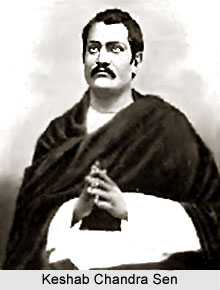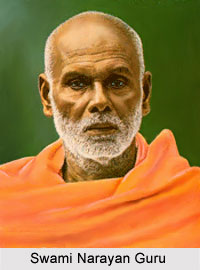 South India has always been popular for rich cultural diversity and tradition. The region was predominantly populated by the Hindus during the British period. People following the other religions like Islam, Christianity, Buddhism, Jainism, etc. also lived in South India. Many socio religious movements in South India have been formed during the British period. The main objective of most of the movements was to eliminate the evil rituals practiced in different religions. Making positive social changes and improving the overall quality of living was also another objective of the socio religious movements in South India.
South India has always been popular for rich cultural diversity and tradition. The region was predominantly populated by the Hindus during the British period. People following the other religions like Islam, Christianity, Buddhism, Jainism, etc. also lived in South India. Many socio religious movements in South India have been formed during the British period. The main objective of most of the movements was to eliminate the evil rituals practiced in different religions. Making positive social changes and improving the overall quality of living was also another objective of the socio religious movements in South India.
The Veda Samaj was one of the most important and influential socio religious movements in South India. The Samaj was founded at Madras city in 1864, mainly due to the efforts made by Sridharalu Naidu and Keshab Chandra Sen. Keshab Chandra Sen was one of the prominent leaders of Brahmo Samaj in Bengal and he visited Madras to spread the new religious ideals. The Veda Samaj accepted the theistic ideals of the Brahmo Samaj; however, it remained within the borders of Hinduism. Thus the ideals of both these associations were similar. The members of Veda Samaj considered marriage and the funeral rituals as `matters of routine, destitute of all religious significance`. They raised strong voices for `discarding all sectarian views, of gradually abandoning caste distinctions, of tolerating the view of strangers and never offending anyone`s feelings`. Both Brahmo Samaj and Veda Samaj were aimed at opposing polygamy and child marriage and supported widow remarriage.
 Another prominent socio religious movement in South India was started by Swami Narayan Guru. The movement was started by the Izhavas in Kerala. Though the Izhavas were considered untouchables in the society of Kerala during that period, they had a higher status than the lowest castes like the Nayadis, Puluyas and Cherumas. The Izhavas were experts in coconut cultivation and toddy-tapping and some of them were also trained in Sanskrit and the traditional medical system of Ayurveda. However, they faced several restrictions regarding their dress, customs and religious practices and they were not allowed to attend schools with high-caste children. They were also not allowed to take jobs in government sector, enter Hindu temples or have idols of the higher gods in their own temples. All these restrictions sparked rebellion among the Izhavas and by the mid-nineteenth century, they started making attempts to improve their status in the society. They had their own temples, where the Izhava priests conducted the necessary rituals. In 1854, they established the first Izhava temple to worship Lord Shiva, something that was hitherto forbidden to the Izhavas. Swami Narayan Guru later transformed this form of agitation for an improved status of the Izhavas, into a socio-religious movement. Swami Narayana Guru became successful to formulate a doctrine that was aimed at improving the social position of the Izhavas. His message of social change was carried by groups of volunteers who travelled from village to village and town to town. The volunteers asked people from their community to abandon the old unacceptable customs.
Another prominent socio religious movement in South India was started by Swami Narayan Guru. The movement was started by the Izhavas in Kerala. Though the Izhavas were considered untouchables in the society of Kerala during that period, they had a higher status than the lowest castes like the Nayadis, Puluyas and Cherumas. The Izhavas were experts in coconut cultivation and toddy-tapping and some of them were also trained in Sanskrit and the traditional medical system of Ayurveda. However, they faced several restrictions regarding their dress, customs and religious practices and they were not allowed to attend schools with high-caste children. They were also not allowed to take jobs in government sector, enter Hindu temples or have idols of the higher gods in their own temples. All these restrictions sparked rebellion among the Izhavas and by the mid-nineteenth century, they started making attempts to improve their status in the society. They had their own temples, where the Izhava priests conducted the necessary rituals. In 1854, they established the first Izhava temple to worship Lord Shiva, something that was hitherto forbidden to the Izhavas. Swami Narayan Guru later transformed this form of agitation for an improved status of the Izhavas, into a socio-religious movement. Swami Narayana Guru became successful to formulate a doctrine that was aimed at improving the social position of the Izhavas. His message of social change was carried by groups of volunteers who travelled from village to village and town to town. The volunteers asked people from their community to abandon the old unacceptable customs.
The society in South India was mostly dominated by the people from Hindu religion and the Brahmans used to dominate all the other castes in Hinduism. The main reason behind most of the socio-religious movements in South India was the tension between Brahmans and non-Brahmans. The transitional and acculturative movements were mainly formed among the most depressed classes of the society, the untouchables. The long presence of Christianity in South India and the conversion of many lower caste Hindus to Christianity was another cause behind the socio religious movements in South India.



















